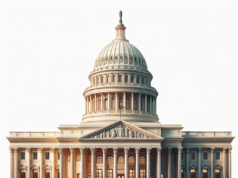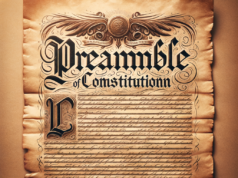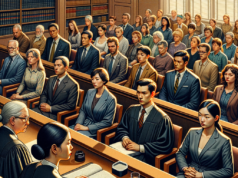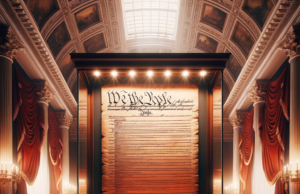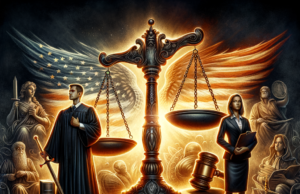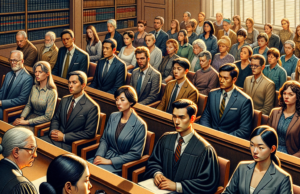Contents
- 1 Understanding the Current Landscape of State Gun Legislation in the U.S.
- 2 Analyzing Recent Trends in Gun Laws Across Different States
- 3 The Impact of State Legislation on Gun Violence and Public Safety
- 4 Examining the Role of Advocacy Groups in Shaping Gun Policies
- 5 Case Studies: States with Notable Changes in Gun Legislation
- 6 Future Implications: What Trends in Gun Laws Mean for Society
In recent years, the landscape of gun legislation in the United States has become increasingly complex and contentious. With a patchwork of laws varying significantly from state to state, the debate surrounding gun rights and regulations continues to evoke strong emotions and divergent opinions. As mass shootings and gun-related violence persist, lawmakers are grappling with how best to balance the rights of individuals to bear arms with the imperative of ensuring public safety. This article delves into the current state of gun legislation, recent trends, the impact of these laws on society, the role of advocacy groups, notable case studies, and the potential future implications of evolving gun policies.
Understanding the Current Landscape of State Gun Legislation in the U.S.
The current landscape of state gun legislation in the United States is characterized by a significant degree of variability, with each state adopting its own set of laws governing the possession, use, and sale of firearms. The Second Amendment of the U.S. Constitution guarantees the right to bear arms, but this right is interpreted differently across states. Some states, such as Texas and Florida, have enacted laws that promote gun ownership and carry rights, including open carry and stand-your-ground laws. Conversely, states like California and New York have implemented stricter regulations, including background checks, waiting periods, and bans on certain types of firearms. This divergence in legislation reflects not only regional cultural attitudes towards guns but also differing priorities regarding public safety and individual rights.
Analyzing Recent Trends in Gun Laws Across Different States
Recent trends in gun laws reveal a growing polarization between states that are enacting more permissive gun laws and those that are tightening restrictions. In the wake of high-profile mass shootings, several states have moved towards implementing stricter gun control measures. For instance, states like Virginia and Colorado have passed laws aimed at universal background checks and red flag laws, which allow law enforcement to temporarily remove firearms from individuals deemed a threat to themselves or others. Conversely, states such as Alabama and Idaho have expanded gun rights, with legislation that allows for permitless carry and the elimination of restrictions on firearm possession in public spaces. This trend underscores a broader national debate on how best to address gun violence while respecting constitutional rights.
The Impact of State Legislation on Gun Violence and Public Safety
The impact of state gun legislation on gun violence and public safety is a subject of ongoing research and debate. Studies have shown that states with stricter gun laws tend to have lower rates of gun-related deaths, including homicides and suicides. For example, states like Massachusetts and New Jersey, which have implemented comprehensive gun control measures, report significantly lower rates of gun violence compared to states with more permissive laws. However, critics argue that such laws may not address the root causes of violence and could infringe upon the rights of law-abiding citizens. The relationship between gun legislation and public safety is complex, influenced by factors such as socioeconomic conditions, mental health resources, and law enforcement practices, making it difficult to draw definitive conclusions.
Examining the Role of Advocacy Groups in Shaping Gun Policies
Advocacy groups play a crucial role in shaping gun policies at both the state and national levels. Organizations such as the National Rifle Association (NRA) and Everytown for Gun Safety mobilize supporters, lobby lawmakers, and influence public opinion regarding gun rights and regulations. The NRA has historically championed the rights of gun owners, advocating for less restrictive laws and opposing measures perceived as infringing on Second Amendment rights. Conversely, groups like Everytown focus on promoting gun safety and advocating for stricter regulations to reduce gun violence. The effectiveness of these organizations in shaping legislation is evident in the contrasting laws enacted across states, as they leverage grassroots campaigns and significant financial resources to sway political outcomes.
Case Studies: States with Notable Changes in Gun Legislation
Several states have recently undergone notable changes in gun legislation that illustrate the broader trends in the U.S. In 2021, Texas passed a controversial law allowing permitless carry, enabling individuals to carry handguns without a license or training. This move was celebrated by gun rights advocates but criticized by those concerned about public safety. In contrast, in the same year, New York enacted a series of gun control measures, including a ban on high-capacity magazines and stricter regulations on concealed carry permits following a Supreme Court ruling that challenged the state’s previous laws. These case studies highlight the dynamic nature of gun legislation and the ongoing tug-of-war between advocates for gun rights and those pushing for stricter regulations.
Future Implications: What Trends in Gun Laws Mean for Society
The future implications of current trends in gun laws are significant for American society. As states continue to adopt divergent approaches to gun legislation, the potential for increased legal challenges and conflicts between state and federal laws may arise. The ongoing debate over gun rights versus public safety will likely intensify, particularly as mass shootings and gun violence remain pressing issues. Moreover, the political landscape surrounding gun legislation is expected to evolve, with advocacy groups continuing to play a pivotal role in shaping public discourse and influencing legislative outcomes. Ultimately, the trajectory of gun laws will have profound implications for the social fabric of the nation, impacting everything from crime rates to individual liberties.
In conclusion, the landscape of state gun legislation in the United States is marked by stark contrasts and ongoing debates that reflect deeper societal values and priorities. As states navigate the complexities of gun rights and public safety, the trends emerging from recent legislative changes will undoubtedly shape the future of gun policy in America. Understanding these dynamics is crucial for policymakers, advocates, and citizens alike as they seek to address the pressing issues of gun violence and individual rights in a rapidly changing world.





